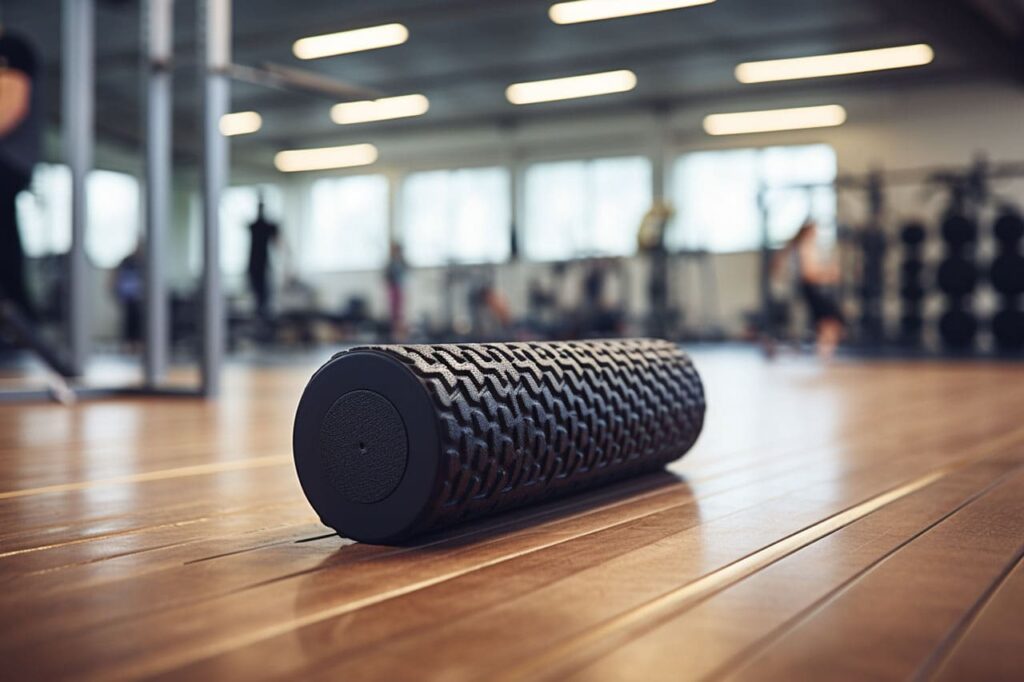

The Runner’s Guide to Effective Recovery Post Half Marathon
Injury Prevention and Recovery July 6, 2023 admin 0

You’ve done it. You’ve crossed that finish line after running a grueling 13.1 miles. Your body’s drenched in sweat, your legs are aching but you’re feeling on top of the world. That’s the magic of a half marathon! But here’s the thing, the race may be over, but the journey isn’t. Just as you’ve trained hard to run that half marathon, it’s now crucial to focus on your recovery post half marathon.
Effective recovery isn’t just about resting up and celebrating your achievement (although that’s certainly part of it!). It’s about giving your body the care it deserves after such an intense physical feat. It’s about recognizing that your muscles, your joints, and your entire system have been under stress and that they need time and attention to heal and rebuild. If you want to bounce back stronger, fitter, and ready for your next challenge, this guide’s for you. Let’s dive into the runner’s guide to effective recovery post-half marathon!
Table of Contents
Refuel with Nutritious Foods for Recovery Post Half Marathon
First off, let’s tackle hydration. Hydrating with electrolytes isn’t just about quenching your thirst, it’s about replenishing the minerals lost through sweat during a workout. Next up, we’ve got energy, and nothing fuels your body quite like carbohydrates. Finally, help your muscles bounce back by giving them what they crave: protein.
Hydrate with Electrolytes
Now that we’ve tackled the importance of warming up and stretching, let’s move on to another vital part of your workout regimen – nutrition. The food and drinks you consume play a major role in replenishing your energy and rebuilding your muscles. Let’s dive in and start with hydration, shall we?
Hydrating isn’t just about drinking water, my friends. It’s about ensuring you’re replenishing the essential electrolytes your body loses during exercise. Electrolytes are critical for many bodily functions, including maintaining proper hydration levels, muscle contractions, and nerve function. When you sweat, you’re not just losing water – you’re also losing electrolytes, especially sodium and potassium. So, how do you ensure you’re getting enough? Sports drinks are a popular choice, but many are laden with sugars. Instead, consider natural sources of electrolytes like coconut water or even a homemade hydration mix with water, a pinch of salt, and some lemon juice. Remember, it’s not about quenching your thirst; it’s about keeping your body running like the well-oiled machine it is.
Replenish Energy with Carbohydrates
Emerging from the realm of proper hydration, let’s now delve into the world of energy replenishment. If you’ve ever felt sapped of energy during a workout, chances are your body needs a good carbohydrate boost.
Carbohydrates are our body’s main source of energy, and they are crucial for fueling our workouts. They’re like the gas in our tank, and without enough of them, we’re bound to sputter out. Now, I’m not saying you should gorge on a bag of chips or demolish a loaf of bread. No, we’re talking about healthy carbohydrates here – think whole grains, fruits, and vegetables. These foods not only provide us with steady, lasting energy, but also pack a punch of essential vitamins and minerals. So next time you’re feeling low on fuel, reach for a banana, a bowl of brown rice, or even a sweet potato. Your body will thank you.
Rebuild Muscles with Protein
After a heart-pounding, sweat-drenched workout, your body is crying out for nourishment. It’s time to listen to that call and give it what it needs.
Rebuilding your muscles is a crucial part of any fitness regimen. This is where protein comes into play. We’re not just talking about chowing down on a steak – although that can help too. There are numerous sources of protein that are perfect for post-workout refueling. Think lean meats, fish, eggs, tofu, and protein shakes. Our bodies can’t store protein, so it’s essential we get a steady supply to help repair and build our muscles. Remember, it’s not about consuming massive amounts of protein, but rather ensuring a consistent intake throughout the day. Your muscles will thank you for it!
Stretch and Strengthen Muscles

Firstly, let’s dive into dynamic stretches. They’re not your average, run-of-the-mill stretches – they’re active movements where joints and muscles go through a full range of motion. Next, we’ll amp up the intensity with resistance exercises – they’re your golden ticket to building strength. Lastly, we can’t forget about yoga, it’s a game-changer for boosting your flexibility.
Perform Dynamic Stretches
So, you’ve powered up with nutritious foods, now it’s time to get that body moving! Dynamic stretches are your next stop on this fitness journey. These aren’t your old-school, static stretches that you hold for a certain period – oh no! Dynamic stretches are active movements where your joints and muscles go through a full range of motion. They’re designed to prepare your muscles for a workout, improving your flexibility and reducing your risk of injury.
Trust me, it’s as fun as it sounds! You can start with arm circles, where you extend your arms and make large circles in both directions. Follow it up with leg swings, lunges with a twist and hip circles. Don’t forget about your upper body – shoulder rolls and neck rotations can do wonders for relieving tightness. Remember, the key is to perform these stretches smoothly and deliberately without rushing.
With each stretch, you’re not just warming up your body, you’re also getting mentally ready to conquer your workout. So, let’s get out there and stretch like a pro!
Strengthen Muscles with Resistance Exercises
Just like a car tank filled with high-quality fuel, you’re now ready to hit the road. But wait, there’s one more thing we need to focus on – the engine, your muscles. So, let’s transition from the kitchen to the gym and give our muscles the workout they deserve.
Now, let’s talk about one of the most effective ways to strengthen your muscles – resistance exercises. Resistance training is not just about lifting heavy weights and getting big muscles. It’s about improving your overall strength, enhancing your muscular endurance, and boosting your metabolism. It’s essential to remember that you’re not competing with anyone else. It’s your journey, and your progress matters, no matter how slow or fast it might be. So, go ahead and pick up those dumbbells, step into that resistance band or hop onto that cable machine.
Gradually increasing the weight you lift, the number of sets you do, or the difficulty level of the exercise will help you gain strength over time. Consistency is key here. It’s better to do smaller, more frequent workouts than sporadic, longer ones. So, make it a point to include resistance training in your workout schedule at least two to three times a week. Remember, your body is stronger than you think, and with each workout, you’re just making it stronger.
Increase Flexibility with Yoga
Now that we’ve got our bodies fueled up with nutritious foods, it’s time to dive into the real action. Let’s talk about yoga, a fantastic tool to increase your flexibility, improve balance, and promote mind-body harmony.
Yoga isn’t just about twisting your body into pretzel-like shapes. It’s a full-body workout that emphasizes stretching and strengthening, which are crucial for overall physical fitness. With regular practice, yoga dramatically increases your body’s flexibility. It’s not about being able to touch your toes, but about moving your body with less effort and more freedom.
Remember, yoga is a journey, not a destination. It’s all about progression, not perfection. So, don’t be discouraged if you can’t do a pose perfectly on your first try. With regular practice and patience, you’ll be able to conquer those challenging poses in no time. So, unroll that yoga mat and let’s get stretching!
Foam Roll Your Muscles
When it comes to relieving muscle soreness, you’ve got to try foam rolling. Not only will it ease the ache, but it’ll also increase your mobility like you wouldn’t believe. Plus, it’s my secret to improving recovery time after a tough workout – so don’t underestimate its power!
Relieve Muscle Soreness
As we transition from stretching and strengthening our muscles to another critical aspect of muscle care, let’s dive into a technique that’s gaining popularity among athletes and fitness enthusiasts alike – foam rolling your muscles. Now, don’t be mistaken, this isn’t just a trend. It’s a science-backed method that can do wonders for your muscle health.
This powerhouse tool can help you relieve muscle soreness like you wouldn’t believe! Imagine working out relentlessly, and your muscles are screaming in protest. That’s when you know you need a foam roller. Picture this – it’s the end of a grueling workout, and you’re feeling the burn. Your muscles are tight and sore, and you’re wondering how you’re going to get out of bed tomorrow. Enter, the magic of foam rolling. By applying pressure to specific points on your body, foam rolling aids muscle recovery and eases tension. It’s like a deep tissue massage you can do anytime, anywhere. So next time you’re feeling the aftermath of a challenging workout, give your body the relief it craves. Try foam rolling and experience the relief for yourself. Trust me, your muscles will thank you!
Increase Mobility
Now that we’ve covered the importance of stretching and strengthening muscles, it’s time to introduce you to another game-changer – foam rolling. This isn’t just a passing trend; it’s a technique that can seriously elevate your fitness routine.
If you’re looking to increase mobility, foam rolling is your new best friend. With consistent use, it can help to loosen up tight muscles and improve your range of motion. Imagine how much better your workouts can be when you can move your body more freely! That’s right, no more feeling like the tin man every time you attempt a lunge or squat. By reducing muscle tightness with foam rolling, you’re literally rolling your way to increased mobility.
Don’t be fooled by its simplicity, foam rolling is a powerful tool in your fitness arsenal. So, grab that foam roller and let’s get rolling – your enhanced mobility awaits!
Improve Recovery Time
After you’ve effectively stretched and strengthened those muscles, it’s time to delve into another technique that’ll give you an added edge – foam rolling. Believe it or not, this simple tool can help you improve your recovery time significantly.
Foam rolling can be a game-changer when it comes to recovery. It’s all about increasing blood flow to your muscles, which helps deliver necessary nutrients for repair and growth. Plus, it also helps flush out waste products from your muscles. I can’t emphasize this enough – consistency is key. Make it a habit to foam roll after your workouts, and you’ll start to notice you’re bouncing back quicker and ready for your next session in no time. It’s the little things that make the biggest difference, and trust me, your body will thank you later.
Take Time to Rest and Relax

Firstly, we can’t underestimate the importance of getting plenty of sleep, it’s crucial for our overall health and well-being. Secondly, consider embracing the soothing ritual of taking a warm bath; it’s an incredible way to wash away the day’s stress. Lastly, the journey to rest and relaxation wouldn’t be complete without incorporating meditation and mindfulness into our daily routine.
Get Plenty of Sleep
Now that we’ve unknotted those tense muscles with some foam rolling, it’s time to focus on another crucial element of your wellness journey – rest. Don’t underestimate the power of a good night’s sleep! It’s not just about feeling refreshed and alert. It’s about giving your body the downtime it needs to heal, repair, and recharge.
Getting plenty of sleep is non-negotiable when it comes to your health. Restful sleep enhances physical and mental recovery, and it’s when most muscle growth and repair occurs. Shoot for 7-9 hours of sleep per night, and prioritize it just like your workouts. Remember, your body needs this time to restore itself, especially after a tough training session. So, don’t skimp on your sleep, folks. It’s not laziness, but essential self-care. Pro tip: Try establishing a consistent sleep schedule to help regulate your body’s clock and optimize your rest. The bottom line here is: Sleep isn’t optional, it’s essential!
Take a Warm Bath
After giving those muscles a good foam roll, it’s time to pamper yourself a little. Taking a warm bath isn’t just a luxury – it’s a necessity for your recovery routine. Soak in that warm water and let the heat penetrate those muscles for ultimate relaxation.
It’s not just about cleaning up; it’s about winding down and giving your body the attention it needs. Add some Epsom salts to the water. These salts are known to help soothe muscle soreness and tension. Trust me, your body will thank you. Now, turn off that phone, light some candles, and take that well-deserved bath. You’re not being lazy, you’re being proactive. So, go ahead and soak up the benefits.
Incorporate Meditation and Mindfulness
Just as you’ve learned to tend to your muscles with foam rolling, it’s equally important to nurture your mind. Let’s shift our focus inward, onto the practices of meditation and mindfulness, which are key components of a sound rest and relaxation routine.
Meditation isn’t just for yogis anymore, it’s for everyone. It’s a simple practice that can reduce stress and increase your inner peace. And guess what? You don’t need a special room or a fancy cushion to do it. You just need a quiet place and a few minutes of your time. Even just 10 minutes a day can make a huge difference. So make it a habit, include it in your daily routine. You’ll soon find yourself more focused and less stressed.
Mindfulness, on the other hand, is taking the practice of meditation one step further. It’s about being present in the moment, and really tuning in to your body. It’s about acknowledging your thoughts, feelings, and the world around you without judgment. By practicing mindfulness, you’re not just resting your body, you’re resting your mind too. So go ahead and give your mind the break it deserves, it’s time to meditate and be mindful.
Monitor Your Progress

Firstly, it’s vital to keep track of your performance, as it’s the only way you’ll truly know if you’re improving. Moving on, monitoring your heart rate is an effective method to gauge your fitness level and ensure you’re pushing yourself without crossing the danger zone. Finally, make sure to record your miles; it’s a tangible measure of your commitment and progress on this journey.
Keep Track of Your Performance
While it’s important to take time to rest and recover, it’s equally crucial to keep a keen eye on your progress. Keeping track of your performance isn’t just about vanity, it’s an essential part of your fitness journey.
I can’t stress enough the importance of consistently monitoring your performance. It’s not just about setting personal records. It’s about understanding your strengths, weaknesses, and areas for improvement. Whether you’re running, lifting weights, or practicing yoga, make it a habit to record your workouts. Note down how many reps you did, how far you ran, or how long you held a pose. This way, you’ll have a clear picture of your fitness progress and know exactly where you need to push more. Remember, growth comes from pushing beyond our comfort zones.
In the same vein, don’t get disheartened if you’re not seeing immediate results. Fitness is a marathon, not a sprint. It’s the consistent effort that brings about lasting change. So, keep track, keep pushing, and most importantly, keep believing in your strength.
Monitor Your Heart Rate
Just as we’ve emphasized the importance of rest, let’s not forget that progress is equally vital to your journey. One key way to keep your finger on the pulse of your progress is to, quite literally, monitor your heart rate.
Monitoring your heart rate is much more than just a fancy fitness fad. It’s a solid, scientific way to gauge the intensity of your workouts. Your heart rate can tell you if you’re pushing too hard or not hard enough. It can reveal how effectively you’re recovering between sessions. It’s like a personalised dashboard that reveals the real-time impact of your efforts. So, don’t just sweat it out blindly. Tune into your heart rate and let it guide your fitness journey. Believe me, it’s an empowering feeling when you know you’re in control.
Record Your Miles
Just as you’re recharging your batteries, it’s critical to also charge ahead on your journey towards achieving your fitness goals. Now, let’s rev up our engines and move onto the next phase of our fitness journey – monitoring progress.
Let’s start with Recording Your Miles. I can’t emphasize how vital this is. It’s like your fitness diary, a log of your journey. The miles you clock in each day, week, and month add up to a bigger picture of your endurance, stamina, and overall fitness levels. Whether you’re running, cycling, swimming, or even walking, every mile counts. Remember, every step you take is a step closer to your goal. So, start today. Note down your miles, and you’ll soon notice your progress. It’s a great motivator, trust me.
Find Balance in Your Training
To ensure you’re achieving balance in your training, let’s delve into some key areas. First up, don’t be afraid to mix up your running workouts; adding variety can prevent boredom and plateauing. Moreover, remember, rest days are crucial for recovery and you’ll also benefit from cross-training, as it works different muscle groups and boosts overall fitness.
Vary Your Running Workouts
Having established a framework for tracking your progress, we now need to bring a dynamic element into your training regime. Let’s dig into the first topic: Vary Your Running Workouts.
If you’re always running at the same pace, on the same route, you’re not giving your body the challenge it needs to improve. Mix it up a bit! Incorporate speed intervals, hill workouts, and long, slow runs into your training schedule. This will not only prevent boredom but also improve your overall performance. Remember, variety is the spice of running. Your body’s adaptability is your secret weapon. When you constantly introduce new challenges, your body has no choice but to become stronger and more efficient. So don’t be afraid to step out of your comfort zone. That’s where all the magic happens!
Include Rest Days
While tracking your progress is a vital step to reaching your running goals, it’s essential not to overlook the importance of balance in your training regimen. One key aspect of maintaining this balance is to include rest days in your plan.
I can’t stress enough how important rest days are in any training schedule. You might think that more running equals more progress, but that’s not always the case. Your body needs time to recover and rebuild itself after intense workouts. That’s when the real magic happens. You see, rest days are when your body repairs the microscopic damage to your muscles caused by running. This process makes your muscles stronger and more resilient to future strain. So, don’t feel guilty about taking a day off. You’re not being lazy – you’re giving your body the recovery time it needs to become stronger. Remember, it’s about running smarter, not just harder.
Incorporate Cross-Training
As we keep a steady eye on our running progress, it’s also essential to remember that running isn’t the only way to boost our performance. Now, let’s delve into the world of cross-training.
The beauty of cross-training is that it allows us to use different muscle groups, reducing the risk of injury from overusing specific muscles during running. It also provides variety, making our fitness journey more interesting. Remember, working out doesn’t always mean hitting the pavement with your running shoes. Try cycling, swimming, or even joining a dance class. It’s about keeping active and enjoying it. A well-rounded fitness program incorporates a variety of exercises to keep our bodies challenged.
But let’s not just throw ourselves into any cross-training activity that comes our way. We need to choose wisely. Activities that improve cardiovascular fitness and build strength are ideal. So, go ahead and be bold, mix up your routine! Remember, the goal is to find activities that you enjoy, not just to do them for the sake of it.
Stay Motivated with Positive Reinforcement
Celebrating your achievements is more than just a pat on the back; it’s a vital part of staying motivated. Once you’ve acknowledged your success, reward yourself – you’ve earned it, and it’s a powerful way to reinforce positive behavior. Lastly, don’t forget to set clear goals and consistently track your progress; it’ll keep you focused, and seeing how far you’ve come will give you that extra push to keep going.
Celebrate Your Achievements
Now that we’ve found balance in our training, it’s time to keep the momentum going by lighting the path with positivity. We need to start with the first stepping stone of motivation: Celebrating Your Achievements.
It’s time to shout from the rooftops every time you nail a personal best, or even just complete a challenging workout. No achievement is too small to celebrate. Be proud of every step you take in the right direction, it’s proof of your hard work and dedication. When we celebrate our achievements, we’re not just patting ourselves on the back. We’re reinforcing the positive behavior that got us there in the first place. So go ahead, throw your hands up in the air, do a little victory dance, and let the world know, you did it! Because you’re not just working out, you’re building a better you, one achievement at a time.
Reward Yourself
Once you’ve found equilibrium in your training routine, don’t forget to reward yourself for all the hard work you’re putting in. Now, let’s dive into the rewarding part of your journey – that’s right, it’s time to give yourself some well-deserved treats!
You’ve earned it. Don’t underestimate the power of a reward. It’s not just about indulgence – it’s about recognizing your effort and giving yourself a pat on the back. Whether it’s a cheat meal, a new outfit, or a day off to relax, these rewards can boost your motivation and make you feel great about your progress. So, go ahead, reward yourself, you deserve it!
Remember, it’s not about undoing your hard work with frivolous splurges. It’s about giving yourself a moment to enjoy your progress and keep the momentum going. You’re not just rewarding the result, but also the effort you’ve put in. So, don’t feel guilty about treating yourself. In fact, consider it a crucial part of your training routine. You’ve been bold and brave in your journey, and it’s important to acknowledge that.
Set Goals and Track Your Progress
Right, now that we’ve hammered out how to find balance in your training, it’s time to talk about something equally crucial – keeping your mojo alive and kicking! It’s not just about breaking a sweat, but also about celebrating your victories, rewarding yourself, and – this is a big one – setting goals and tracking your progress.
Let’s talk about goal setting first. Set realistic, achievable goals. Don’t just aim to be the next Usain Bolt or Serena Williams overnight. Instead, start with something doable like shaving a minute off your mile run, or hitting a certain number of reps in your strength training. It’s also important to break down your larger goals into smaller, manageable chunks. This way, you’ll be able to celebrate mini victories along your journey, which will keep you motivated.
Now, tracking your progress – this is your proof that you’re moving forward. There’s nothing quite like seeing the numbers change in your favour, whether it’s your speed, strength, or weight. So, keep a training diary and jot down every detail of your daily workouts. This will not only help you track your progress but also identify areas where you might need to put in more work. Remember, it’s all about continuous improvement.
Consult a Professional
When you’re looking to up your running game, finding a running coach should be your first step. Now, don’t forget about your body’s health and wellbeing, visiting a physical therapist can ensure you’re in the right shape to tackle your running goals. Lastly, let’s not overlook the power of a well-balanced diet; talking to a sports nutritionist will give you that extra edge in your performance.
Find a Running Coach
Having mastered the art of keeping your spirits high with positive reinforcement, let’s now pivot to a new challenge that can take your running to the next level. This is where we tap into the expertise of professionals.
Let’s start with finding a running coach. A running coach isn’t just for elite athletes or marathoners. They’re for anyone who’s serious about running, and that includes you! A running coach can provide you with a personalized training plan, help you avoid injuries, and give you the guidance and support you need to reach your running goals. At times, we tend to underestimate what we’re capable of, but a coach sees your potential and pushes you towards it. It’s like having a personal cheerleader who also has a wealth of knowledge about the sport. So, get out there and find a coach who resonates with your running aspirations.
Visit a Physical Therapist
Once you’ve fueled your motivation with a hefty dose of positive reinforcement, don’t rest on your laurels. Now, it’s time to take a bold step forward – and that step should lead you right to a physical therapist’s office.
Let’s be real. We’re all human, and sometimes we push ourselves too hard. That’s why visiting a physical therapist is such a crucial part of your running journey. They’re the pros who can help you avoid injury, recover faster, and run more efficiently. You might think physical therapy is just for people who are injured, but that’s not the case. Regular check-ins with a physical therapist can help you keep your muscles, joints, and tendons in tip-top shape. They’ll work with you to create a personalized plan that suits your body and your goals.
So don’t just sit there – take action! Book an appointment with a physical therapist and let them guide you on your journey to become the best runner you can be.
Talk to a Sports Nutritionist
Moving from the realm of mental motivation, let’s now step into the world of professional guidance. If you’re serious about running, you’ve got to start treating your body like the fine-tuned machine it is. And that means you’ve got to fuel it right.
We’re not just talking about eating healthy here, we’re talking about strategic nutrition – and that’s where a sports nutritionist comes in. These guys are not your regular dieticians. They’re specialists trained in the art of fueling athletes for optimal performance. Chatting with a sports nutritionist can help you learn what to eat and when, to ensure you’re always running at your peak.
Remember, knowledge is power. So, the more you know about your body’s nutritional needs, the better equipped you’ll be to crush your running goals. Don’t be shy, reach out to a sports nutritionist today and see how they can help you level up your running game.
The Finish Line
Remember, you’ve just completed a half marathon! There’s no small feat in that. It’s important to keep the same determination and discipline in your recovery process. Pointers like refueling with nutritious foods, stretching, foam rolling, and taking adequate rest should be your mantra now.
Don’t forget to monitor your progress, and keep the balance in your training. Stay motivated and if need be, don’t hesitate to consult a professional. You’ve got this, champ!
No comments so far.
Be first to leave comment below.